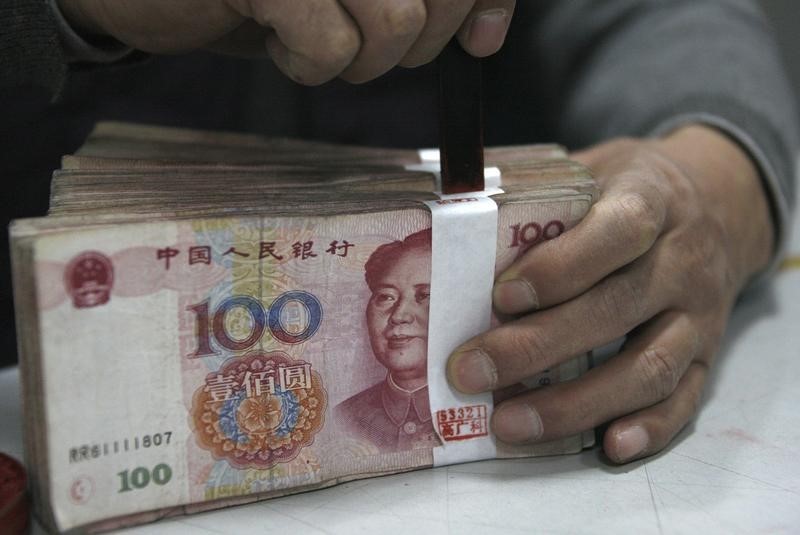* China cuts U.S. import tariffs
* Yuan hits highest since Lunar New Year break
* Aussie rises, yen softens
* U.S. dollar at two-month high after strong data
* Graphic: World FX rates in 2020 https://tmsnrt.rs/2RBWI5E
By Tom Westbrook
SINGAPORE, Feb 6 (Reuters) - The Australian dollar and Chinese yuan rose on Thursday after China unexpectedly said it would halve tariffs on some U.S. imports, a goodwill gesture that added to hopes the global economy may be able to avoid a major shock from a virus outbeak.
China said on Thursday that the cuts apply from 0501 GMT on Valentine's Day, Feb. 14 and that it hopes to work with the United States to eliminate all tariff increases in future. came with investors already beginning to emerge from safe-haven assets and bet on the virus being a short-term shock, even while the human toll continued to grow. MKTS/GLOB
"Any news along these lines is good news," said Robert Rennie, head of markets strategy at Westpac in Sydney.
"It adds to the sense that there's a number of policies both domestically and globally which could help to mitigate the impact of coronavirus," he said, while adding its actual efficacy may be limited because of the expected hit to demand.
The yuan CNY= advanced 0.2% to 6.9601 per dollar, its highest since Jan. 23, while the Australian dollar AUD=D3 rose by the same margin to $0.6759. The Korean won jumped half a percent KRW= .
All had been heavily sold in favour of safer currencies such as the Japanese yen in recent weeks as investors scrambled to price in a sharp economic slowdown in China.
The yen on Thursday slipped to a two-week low of 109.95 per dollar JPY= .
The death toll from the coronavirus in mainland China rose by 75 on Thursday, its third consecutive record daily rise. Infections stand at 28,018. with more than 99% of them in China and hundreds of experts set to gather in Geneva next week to devise plans to combat the virus, investors have seemingly gravitated away from the more dire views about the epidemic's impact on global growth.
Chinese authorities have also pumped in billion of dollars into money markets this week in an effort to restore calm, and have pledged to do more to support the economy.
Overnight the S&P 500 .SPX made a fresh record closing high and Asian equity markets extended their rally on Thursday.
Firm U.S. private payrolls, which posted their biggest jump in nearly four years, drove the dollar to a two-month high against a basket of its peers .DXY . greenback extended gains against the pound in Asian trade, gaining 0.1% to $1.2977 per pound, while sitting only a fraction below a two-month high against the euro EUR= at $1.0996.
"This is a market that was just wanting to go higher, it just needs a reason," said Chris Weston, head of research at Melbourne brokerage Pepperstone.
"It's like a jack-in-the-box, with a lid that is just waiting to spring up," he said.
Though that is not to say caution is absent. Many risk-sensitive assets are still trading at substantial discounts to their prices of a few weeks ago.
The virus has disrupted air travel, driven holiday cancellations, factory closures and production cuts leading most economists to make deep downgrades to their China growth forecasts.
Oil prices are rising, but the recovery is much slower than the selldown as the size of the expected hit to demand grows. O/R
"Places where the optimism isn't being felt include Thailand and Singapore, with room for easier monetary policy being explored," said Kit Juckes, an analyst at Societe Generale (PA:SOGN).
The Thai baht THB=TH has shed about 2% since Jan. 20 and stayed soft on Thursday, while the Singapore dollar SGD= extended its slide having suffered its steepest drop in two years on Wednesday after the central bank flagged room for the currency to ease amid the virus fallout. EMRG/FX
